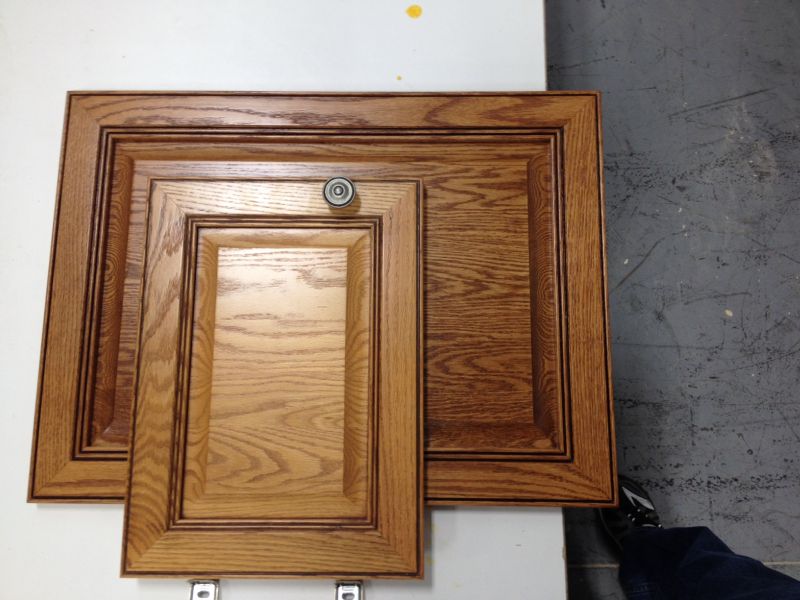Question
Certain areas of clear coated wenge veneer have turned a milky white. One area is around the kitchen sink on the edgebanding of the drawer and cabinet door fronts. The other area is at the wall of an island where a pizza box was left on a stool. It appears the warm moisture from the fresh pizza caused this. Why would the finish turn white? Shouldn't the clear coat be a little tougher? We are not sure what the clear coat is. There is speculation that it is a cellulose lacquer, while the spec was for catalytic lacquer. The millworker states that a two-component polyurethane lacquer Articryl manufactured by Becker Acroma was used. To compound the dilemma, the client's housekeeper has said that she sees this effect wherever dark wood cabinets are used (which of course does not always mean wenge)! Is there a characteristic of wenge that undermines a clear coat finish?
Forum Responses
(Finishing Forum)
From contributor L:
If a 2K poly was used, it is unlikely it would be affected by water in that manner. Sounds like a waterborne product may have been used. A lot of these act that way. You get them wet and they turn milky. When the coating dries out it turns clear again.
What cleaning agents are being used on these cabinets? Some pre-cats are weak enough to let chemicals damage the coating. A 2K poly is pretty close to bulletproof.
1. They may not have really used that product.
2. They may not have used enough of it. Wenge is an open pore wood and if they just sprayed a couple of quick coats, it won't protect in wet areas.
3. The housekeeper may be really getting the wood wet when cleaning. This is not an exterior coating and isn't designed to be soaked.
The pizza box is creating steam, which could still be 1 and 2.
"If the damage is superficial, just white marks, you might be able to remove them by burning them out. Wipe the marks with alcohol, set fire to them with a match, leave it to burn off, and the marks will disappear without affecting the lacquer. I've done this many times, and it works a treat..."
I trust that the 2k poly is being used for the remedial work (the cabinet fronts were removed, taken back to shop and refinished) but that a less durable finish may have been used originally. I see that there are many variables.
The question of cleaning agents being used and how wet the millwork is getting is a good one. There are clear instructions to use nothing stronger than a damp cloth or mild dish soap and to try to dry the surfaces when possible, but who knows how the millwork is maintained.
In answer to the comment about the location of the cloudiness, it is hard for me to tell its position. By the sink there appeared to be what looked like wicking in of whiteness at the edges of the face of the drawer fronts in addition to whiteness on the edgebanding. I specified 1/8" solid wood banding at the door fronts. The millworker used veneer instead but he did such a nice job on the kitchen I did not want to give him a hard time about this. Unfortunately we have this whitening problem.
I will pass the burning idea along to the millworker. The millwoker took the pieces that could be removed back to the shop to refinish. The tough part is addressing things like the island wall that must be done in-situ.
The millworker's product turned out beautiful, we just have this finish problem which was not apparent until after all parties were paid. The problem's cause is hard to diagnose - could be owner's cleaning approach, millworker's finishing, or a combination of the two.
I have also seen cleaning products cause this, but from what you said about the hot pizza, it sounded like moisture fogging.
Out of curiosity, how old is this work? When did these marks first appear?
2. By summer 2009 this problem at the edges and corners began to manifest. The pizza box incident happened over fall 2009. That there was a whitening problem very soon after installation makes me think there must be some flaw in the finish rather than the maintenance.
This may seem like a long time, but there were other punchlist items being addressed after the client moved in so the job never really got fully closed out. Funny thing is that the job was successful, the client is mostly happy, we just have this lingering whitening issue.
